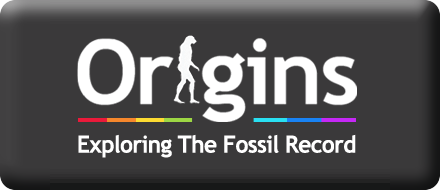 |
 |
APPENDIX 2 - TWYFELFONTEIN SITE REPORT BY SVEN OUZMAN |
12/18 |
| |
|
Site 12 – Twyfelfontein Main Site Complex |
Der Westliche Berghang
Site G on Scherz’s Map (G in
Figure 14)
S 20° 35’ 53’’ / E 14° 22’ 29”
Site Description
This site is located further south than Site 11 and on the 620m contour. There is a good view to the west over an opposing valley. There is a much steeper slope behind these engravings.
Associated Archaeology
The archaeological context has been very disturbed by visitors though there are still hornfels and quartzite stone tools visible off the walkway areas. Water action also disturbs the archaeological context in the wet season.
Description of Der Westliche Berghang’s rock art
There is a jumble of large rock blocks and a localised cluster of Bushman rock engravings (~150) on about two dozen rocks.
Carstenplatte: This is the most impressive engraved near-vertical expanse that dominates Site 12. Named after `H.J. Carsten’ who engraved his initials, surnames and the date `25. I. 1948’ on this engraved panel. His name and the date have been unsuccessfully covered up by a cement slurry as at the Riesenblock. Before this, the name was whitewashed out. On the vast sandstone expanse is a multitude of finely-pecked imagery that includes: many pecked-infill and 3 pecked-outline rhino, a human footprint, over 11 giraffe – including one with intricate pecked body patterning – ostriches, an elephant, oryx, juvenile oryx, and odd aardvark-like animal, several short, paired parallel pecked lines (?spoor), zebra and so on.
Sloping rhino rock: Immediately left of the Carstenplatte there are two superb 900mm x 470mm ?white rhinoceros, one with a 300mm anterior horn and unusually long tail engraved in a deep and careful pecked-infill. Back lines are quite wiggly and one rhino appears to have a penis sheath.
Weathered rock: Below the rhino is a rock on which there are 3 extremely weathered equids – one in pecked-outline, one in pecked-infill and the lowermost a chemically weathered pecked-outline. There may be a fourth equid to the left.
Zebra rock: On the leftmost approach to the Carstenplatte and adjacent to the Rhino rock is a near-horizontal rock onto which have been engraved in very bright and singular lines 8 clear striped zebra, a big 750mm pecked outline rhino, a pecked-outline kudu, 1 pecked-outline oryx, 2 rough pecked infill ostrich, a possible zebra foal and 8 paired parallel engraved lines. The aesthetic of these engravings is unlike anything else at Twyfelfontein and the light patination suggests that these engravings are of a more recent date than most other engravings here.
Below the Carstenplatte: On the level area below there is an upright boulder on which a large elephant has been pecked in infill and whose feet end in the twisted perspective spoor view. Tusks and trunk are clearly visible. On the same boulder are also engraved pecked-infill antelope, equids and giraffe. There are feline pug marks as well as antelope spoor depicted. Above are a rhino and a possible eland and a possible juvenile antelope. On adjacent rocks there are ostrich – finely done and recent examples – as well as giraffe.
Penguin rock: Nearer to the watercourse on lower slopes on the river on a 4m long, 30° sloping, rock slab. On this are engraved giraffe, 4 ostrich, rhino in partial pecked-infill, several small animals – probably antelope – at least 5 wildebeest-like animals and three strange animals – two large and one small. These animals Dr. Scherz thought might represent penguins, but these are more likely to represent very rudimentary giraffe such as those found below the Löwenplatte.
Other imagery: Scattered about in the mini-amphitheatre below the Carstenplatte are engravings of antelope, ostrich, rhino, a possible human figure, quite a number of giraffe, a roughly pecked-infill elephant and two well pecked-infill elephant on a rock to the south and west.
Threat(s) to site: The sandstone-coloured cement slurry used to cover up Carsten’s name and date on the Carstenplatte is disastrous and should be rehabilitated. The site is accessed by a steep slope from below and the access paths are severely eroded. Some of the imagery appears to have been rubbed.
→
A Survey into the Relationship between
Animal-Engravings & Cupules
→
The Rock Art of Twyfelfontein
→
The Rock Art of Namibia
→
The African Rock Art Archive
→
Bradshaw Foundation
Like us on Facebook & Follow us on Twitter to receive news & updates:







